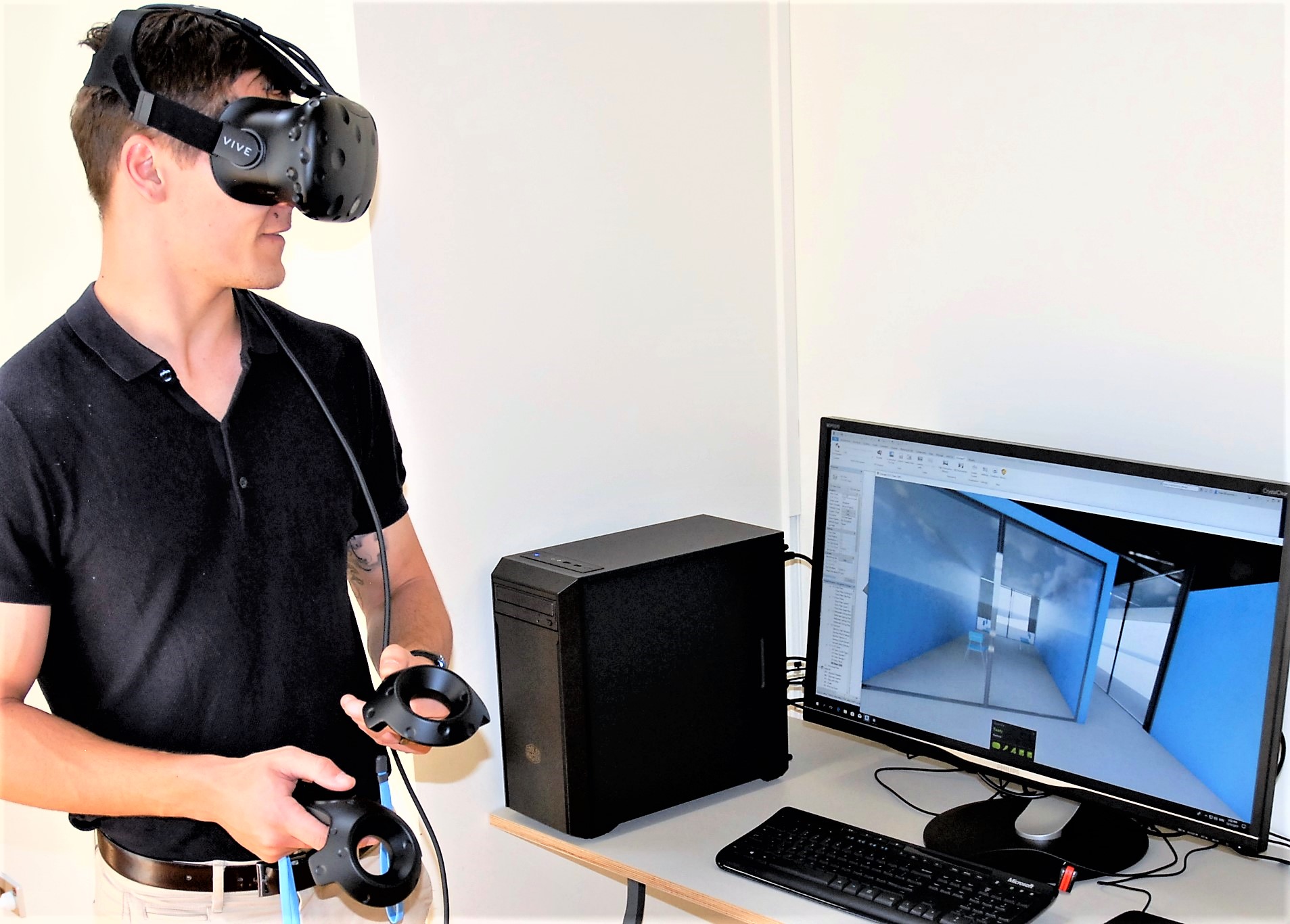Acronym Ltd provides new vision
Some people get it and some people just don’t. Architect Marc Lithgow of Space Division is often bemused when a set of beautifully designed bespoke house plans are presented to a client. It might be a reaction like, “Yip, yip, yip, awesome!” or perhaps an uncomfortable silence, depending on the client’s ability to visualise two dimensional plans.
“How often does a client say you’ve done exactly what I want but it doesn’t feel right?” says Marc.
“Their ability to visualise can be the biggest stumbling block.” Despite elaborate plans, scale models even, clients can still be fearful of making decisions.

From the very first time Marc saw Virtual Reality in action he told himself he simply must have it. This is an industry where much of the consultancy time is spent getting feedback from the client. Having a design tool that actually takes the client right inside the construction, showing them a 360 degree view is time-saving and reassuring.
Now thanks to Acronym and the extraordinary solutions from Microsoft, Virtual Reality or VR has added a new tool to the art of consultancy for Space Division. Marc says they already had an excellent working relationship with Acronym and they knew they could deliver what Space Division needed.
“I approached Acronym and said I’ve seen VR demonstrated, can you achieve this for us?” Marc continues. “I think they were as excited with the project as we were.”
VR answers questions and removes assumptions. Putting on a VR headset allows the client to experience what it will be like to stand in the room and see the full effect of the design elements Space Division have introduced. By simply turning your head left and right the headset brings the whole house to life. Microsoft’s continuous development of VR means companies like Space Division can also advance, passing the benefits onto their clients. “The client wants to know what the sun will be like in that room, now we can even turn the lights on and off and see the shadows,” Marc explains.
Acronym had thoroughly researched the available Virtual Reality hardware and recommended what would best suit Space Division. They had a hard drive up-specified to handle the VR technology. The graphics were properly specified for complex architecture and then paired down to meet Space Division’s needs. Finally the virtual reality cameras were installed.

Dave Allum, General Manager at Acronym says the whole system they provided to Space Division is super-grunty. “It’s more like something you’d expect to see at Weta Workshops, designed especially to provide the high quality imagery required.”
Marc indicates the response from Space Division clients so far has been overwhelmingly good. “The residential market is a very emotional one, the houses we design are one-offs and it’s essential we get it right, interpreting the client’s needs and providing all the features they require,” Marc explains. “We spend a lot of time in a consultancy just getting feedback and of course time is money, so providing the client with a headset and a Virtual Reality tour means we’re now presenting our work in a whole new medium.”
Acronym is excited at the future potential for VR and keen to explore how it can serve other industries. Plumbing, engineering, tourism, manufacturing and product design; the Microsoft Virtual and Augmented applications are endless. If a need for a better view, a closer or remote inspection presents itself, Acronym are keen to discuss applying Virtual Reality as a solution.


